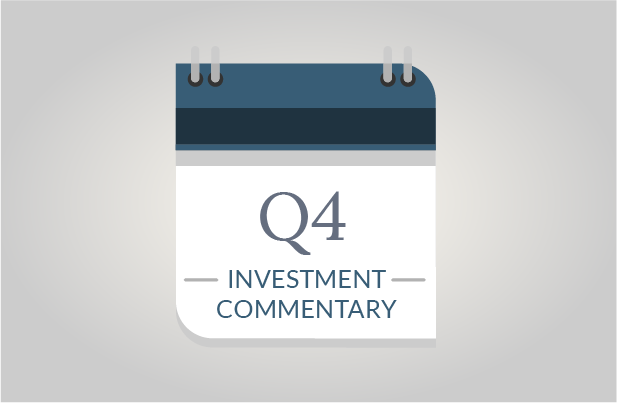The American Rescue Plan, also called the COVID-19 Stimulus Package, was signed into law on March 11, 2021 and includes a total of $1.9 trillion of assistance. The American Rescue Plan includes assistance for state and local governments, transportation and infrastructure programs, businesses, schools, coronavirus testing, contact tracing and vaccination efforts.
The plan includes a third round of stimulus payments, which are the largest checks to date. In addition, the bill also extends certain unemployment benefits and expands tax relief for unemployment benefits, the Child Tax Credit, and the federal Earned Income Tax Credit (EITC). The following summary focuses on benefits available to individuals and families.
Third Stimulus Payments for Individuals and Joint Taxpayers
Those eligible will receive up to $1,400 in stimulus payments for each taxpayer in their family, plus an additional $1,400 per dependent. Unlike the previous two rounds, you will receive stimulus payments for all of your dependents, including adult dependents, older high school dependents, and college students who are dependents.
The Adjusted Gross Income (AGI) Phaseout ranges for the Recovery Rebate are quite narrow and apply to all taxpayers, regardless of how many dependents you claim:
Single Filers: $75,000 – $80,000
Head of Household: $112,500 – $120,000
Married Filing Jointly: $150,000 – $160,000
There are three “Check Points” that the IRS will review and use to determine eligibility when issuing the 2021 Recovery Rebates.
Check Point # 1:
- A taxpayer’s 2019 and/or 2020 tax return if it has already been filed.
- Is their Adjusted Gross Income less than or equal to the AGI Phaseout range?
- If so, the taxpayer then receives their full recovery rebate check via direct deposit, check or debit card.
Check Point # 2: Additional Payment Determination Date
- For taxpayers who have not yet filed their 2020 tax return.
- Used in case their AGI is less in 2020 than it was in 2019. This is especially important for those who had negative impacts to their income in 2020.
- The taxpayer can have their Recovery Rebate amount recalculated based on their 2020 AGI.
- If their 2020 AGI produces a higher Recovery Rebate, the IRS will send additional stimulus for the difference.
Additional Payment Determination Dates are the earlier of:
- 90 days after the 2020 calendar year tax filing deadline (now extended to May 17th)
- September 1, 2021
- If your 2020 AGI was lower than 2019 and would allow you to receive a higher stimulus check you must file your 2020 return before this deadline to be eligible for “Checkpoint 2”.
* IMPORTANT: If you extend your 2020 tax return until the final IRS October 15, 2021 deadline, you will miss the deadline for this 2nd Checkpoint for the Recovery Rebate, and will instead have to qualify under the 3rd Checkpoint, which will be based on your 2021 Income tax return.
Check Point # 3:
- The Recovery Rebate is a 2021 tax credit.
- If a taxpayer’s 2021 AGI is lower than their 2019 and/or 2020 AGI, and below the Adjusted Gross Income Phaseout, a Recovery Rebate credit will be applied on the 2021 tax return.
An important note pertaining to any amount received is that there is no claw back. Any amount received by a taxpayer based upon their income on file with the IRS is theirs to keep.
Expanded Unemployment and Retroactive Tax Relief
The bill maintains the federal unemployment supplement (on top of state benefits) at its current level of $300 per week beginning after March 14th and before September 6, 2021.
The bill extends the Pandemic Unemployment Assistance (PUA), which expands unemployment to those who are not usually eligible for regular unemployment insurance benefits. This means that self-employed, freelancers, and gig workers will continue to be eligible for unemployment benefits through September 6, 2021.
The bill also makes the first $10,200 of unemployment income tax-free for households with Adjusted Gross Income (AGI) of less than $150,000. Joint tax filers can each receive $10,200 tax-free. This provision is retroactive to tax year 2020 (the taxes you file in 2021). Note that you do have to include your unemployment income benefits when calculating your AGI.
COBRA Subsidies and Premium Assistance Tax Credit
Employees who are involuntarily terminated can elect to maintain their health coverage through COBRA from April to September 2021 at a cost of $0 to the employee. The employer pays the premiums and is eligible for a tax credit for doing so. There is a 90-day window for the employee to elect this.
Note: To qualify, you cannot be Medicare eligible or have other group healthcare available.
Additionally, there are temporary enhancements for 2021 and 2022 to the Premium Assistance Tax Credit (PATC). The enhancements to the PATC decrease the percentage of income a taxpayer has to spend on health insurance purchased through a state-run exchange before the tax credit covers the cost. Taxpayers with household income below 150% of the poverty line will have entire cost of coverage paid for by tax credits. This is a decrease from the normal 4% of income they would have to pay prior to this enhancement. There is NO claw back of excess pre-paid PATC received in 2020.
Expanded Child Tax Credit
For tax year 2021 the Child Tax Credit will be expanded. The bill increases the amount that families claiming the Child Tax Credit receive from the current $2,000 to:
- $3,600 for each child under 6 ($2,000 + $1,600)
- $3,000 for each child age 6-17 ($2,000 + $1,000)
The additional 2021 amounts are subject to lower “Income Phaseouts”
Married: $150,000
Head of Household: $112,500
All Other (incl. Single): $75,000
- The “regular” $2,000 Child Tax Credit is subject to historical phaseouts, or $200,000 for Single filers and $400,000 for Married-filing Jointly taxpayers.
The full amount can be a refundable credit for 2021, meaning you are eligible for the credit even if you don’t owe taxes.
Although this credit is for next year’s tax filings, half of the credit may be paid in advance, beginning in July 2021, so that people don’t have to wait to file their 2021 taxes. The IRS will likely determine eligibility based on your most recent tax filing. Unlike the Recovery Rebate checks, this credit can be clawed back in certain situations on the 2021 tax return.
Temporary Enhancements to the Child and Dependent Care Tax Credit for 2021
The plan temporarily increases the maximum amount of expenses eligible to be used in calculating Child and Dependent Care Tax Credits for 2021. It also temporarily increases the maximum applicable percentage.
Previously, the Child and Dependent Care Tax Credit was calculated using a maximum of $3,000 of expenses when the taxpayer has one qualifying child and $6,000 of expenses when the taxpayer has two or more qualifying children who are under the age of 13 for the entire year. The maximum applicable percentage for these expenses was 35% and was phased down for AGI above $150,000.
Under the American Rescue Plan, the maximum amount of expenses eligible to be used for the calculation has more than doubled in 2021, to $8,000 of expenses when a taxpayer has one qualifying child and $16,000 of expenses when a taxpayer has two or more qualifying children. The maximum applicable percentage increased as well to 50% in 2021.
Taxpayers with an AGI over $125,000 are subject to phaseout, regardless of tax filing status and once AGI reaches $185,000 the applicable percentage reaches a phase out floor of 20%. The applicable percentage stays at the 20% floor until the taxpayer reaches AGI of $400,000. It then phases out 1% for every $2,000 of additional AGI. This means once a taxpayer’s AGI reaches $440,000 they are fully phased out from receiving the tax credit.
The Child and Dependent Care Tax Credit may also be claimed by taxpayers who have a spouse, or other dependents, who are physically or mentally incapable of caring for themselves, provided those individuals live with the taxpayer for more than half of the year.
These are some of the main provisions of the new American Rescue Plan Act of 2021 that benefit individuals and families. Since they can be complicated and are subject to various tests, restrictions and deadlines, you should consult with your tax professional. It would also be wise to keep the terms of these new tax benefits in mind as you make financial decisions this year, so that you do not inadvertently disqualify yourself.




